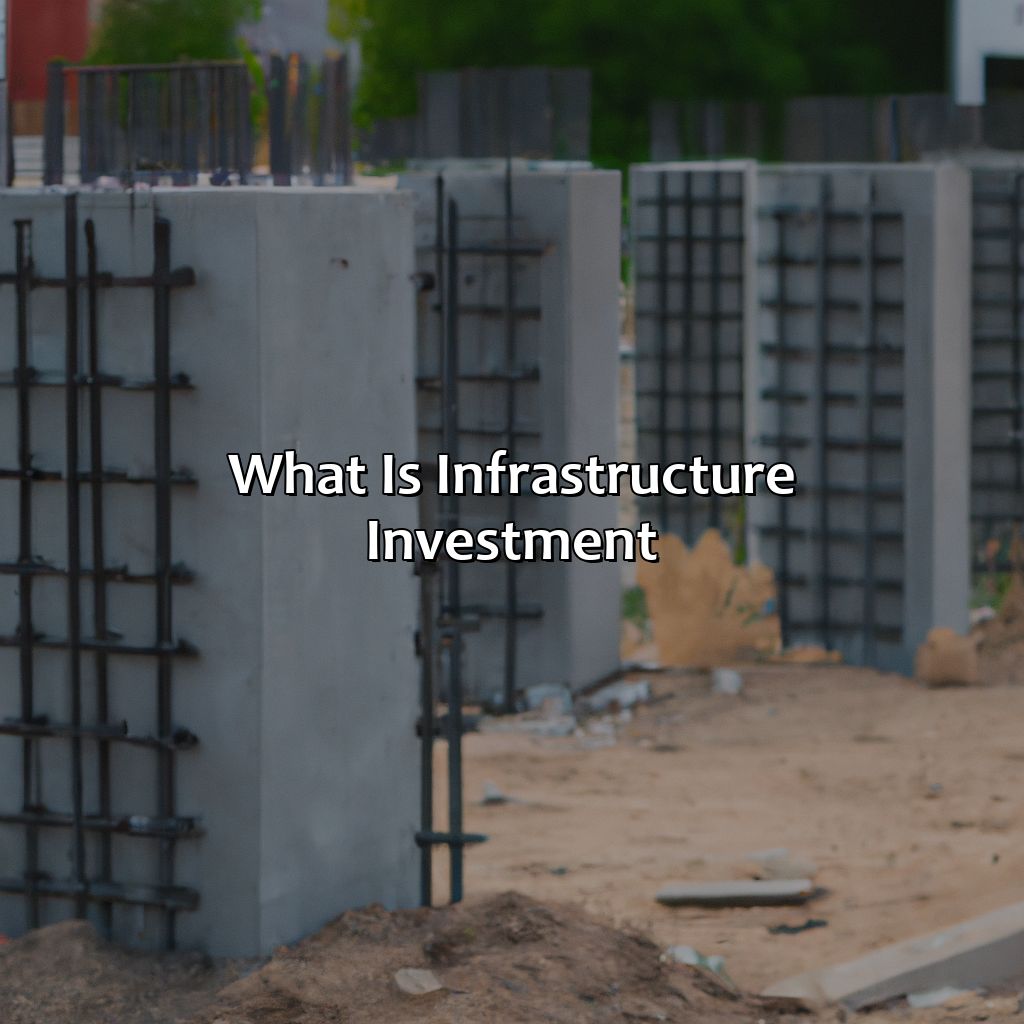What Is Infrastructure Investment?
Key Takeaway:
- Infrastructure investment refers to spending and allocation of funds towards the development of a country’s infrastructure such as transportation systems, water supply, telecommunications, power and energy systems, etc.
- There are various types of infrastructure investments, including green infrastructure, social infrastructure, and economic infrastructure, which have different effects on economic growth, job creation, and quality of life improvement.
- Infrastructure investment can play a significant role in driving economic growth, job creation, and improving quality of life, but the process faces challenges such as funding issues, political risks, and environmental and social concerns that need to be addressed.
Struggling to understand infrastructure investment? You’re not alone. But don’t worry, this article gives you the information you need to get up to speed with this important field. Get ready to explore the world of investment, its opportunities and risks.
Definition of Infrastructure Investment
To get a better grip on infrastructure investment and its importance, it’s essential to explore the different kinds of infrastructure investments available. This will assist you in realizing the significance of infrastructure investments. Examining types of infrastructure investments is not the only factor; it’s also vital to look at the importance of infrastructure investments as a whole.
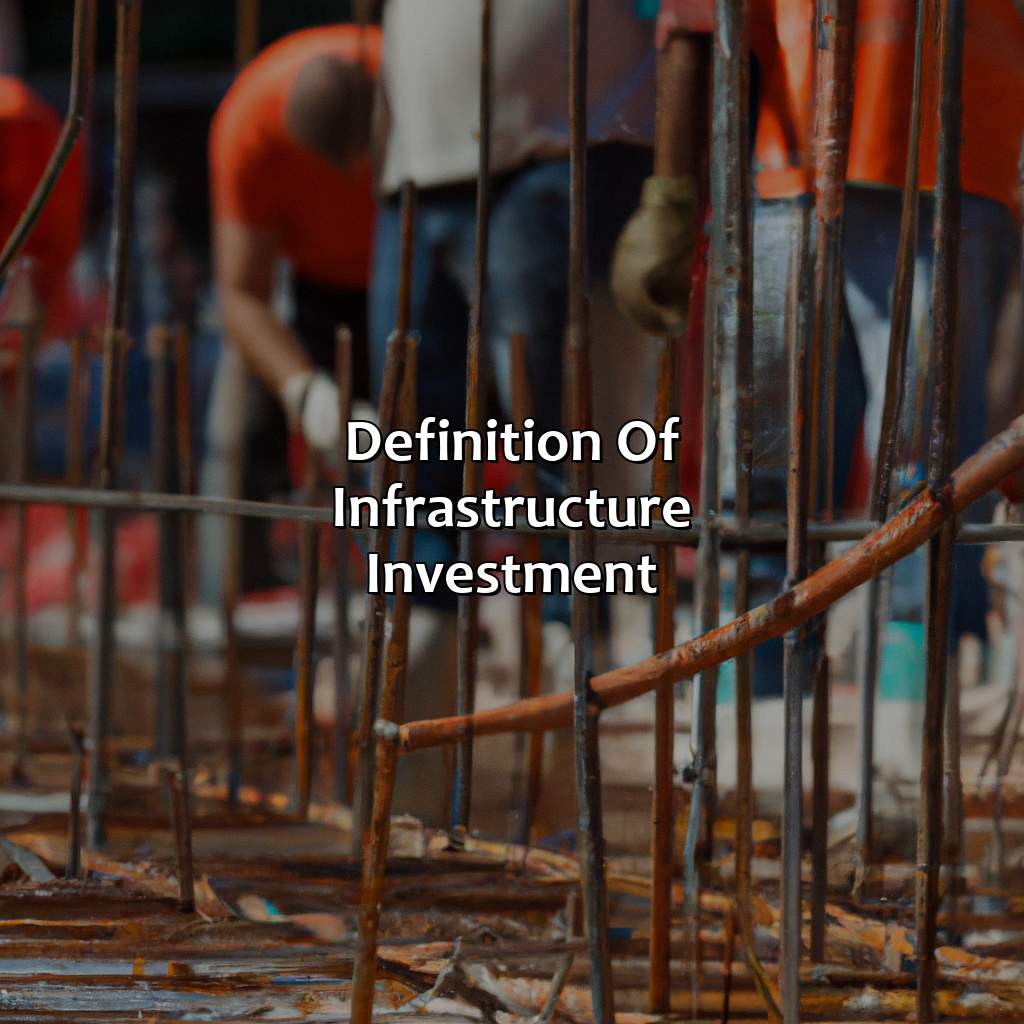
Image credits: retiregenz.com by Harry Arnold
Types of Infrastructure Investments
When looking at the various investment opportunities for growth and stability, one option to consider is investing in infrastructure. This can include a variety of different areas, each with its own potential benefits and risks.
The following table shows some of the infrastructure investment options:
| Roads and Highways | Airports | Railways |
| Water systems (dams, treatment plants) | Bridges and Tunnels | Ports |
| Telecommunications (fiber optics) | Pipelines | Broadcasting Towers |
One important factor to consider when investing in infrastructure is its lifespan. Infrastructure projects often take years or even decades to recoup their cost but can provide benefits for generations. Another consideration is the level of government involvement as this can affect both the funding and regulatory aspects related to these projects.
It’s worth noting that Infrastructure Investment Trusts (InvITs) are becoming increasingly popular in emerging markets such as India and China. These trusts invest in operating infrastructure assets or financed construction projects, allowing individual investors access to these types of investments.
According to a report published by PwC, global spending on infrastructure is expected to reach $94 trillion by 2040, making it a potentially lucrative investment opportunity for those willing to take on the risks involved.
Without infrastructure investment, we’d have to drive our cars on gravel roads, communicate through carrier pigeons, and use smoke signals for emergency services.
Importance of Infrastructure Investment
Investing in infrastructure is essential for sustainable economic growth and development. The creation or improvement of basic physical and organizational structures enables businesses to thrive, economies to expand, and communities to prosper. Maintaining and upgrading infrastructure assets such as roads, bridges, buildings, energy systems, and communication networks can enhance productivity levels and create employment opportunities. Moreover, better infrastructure quality can improve access to essential services like healthcare and promote environmental sustainability by reducing resource wastage.
Improving infrastructure has a wide array of benefits that go beyond the immediate need for accessibility. Innovation in technologies alongside advancements in construction have increased efficiency within these systems creating further long-term financial gains through cost-saving benefits. Long term investments like these also pave the way for emerging industries while simultaneously providing short-term job opportunities for those who are struggling financially.
Great civilizations throughout history are known to have invested in their transportations systems (roads/bridges) that spurred agriculture production and enabled citizens to undertake commercial enterprises with ease. Consequently, improving infrastructure helps mitigate against power outages which increases foreign investment by giving companies an initiative that they will maximize profits from long term operations.
Infrastructure investment: the one surefire way to make sure your daily commute feels more like a wild safari adventure.
Benefits of Infrastructure Investment
To understand the advantages of investing in infrastructure for economic growth, jobs, and a better quality of life, let’s explore the benefits. Such investments can result in higher economic growth. They can also create new jobs and make life much better for the people in the community.
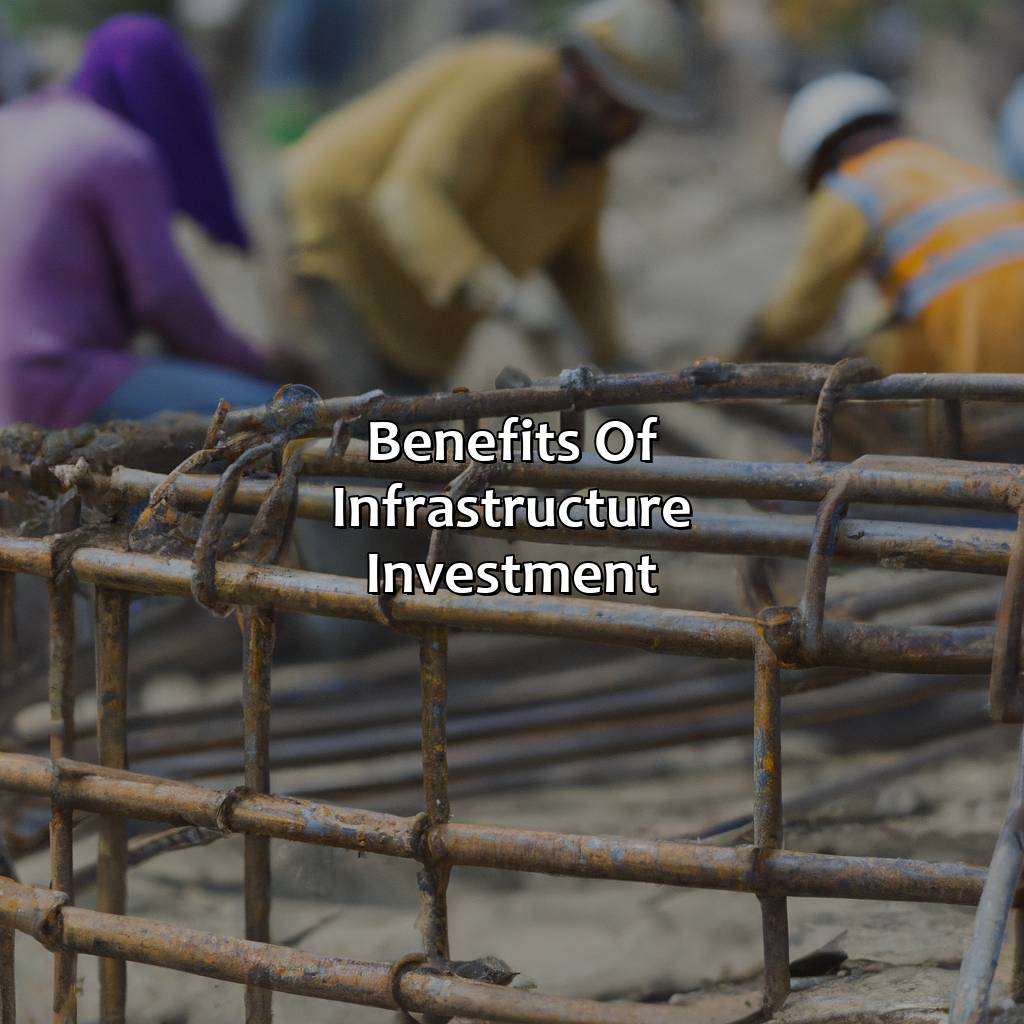
Image credits: retiregenz.com by David Washington
Economic Growth
The development and expansion of infrastructure correlate positively with the growth in a nation’s economy. A robust infrastructure network fuels sustained economic growth by boosting trade, productivity, and investment across all sectors. Investments in infrastructure lead to new opportunities for businesses to expand their operations, leading to job creation, income generation, and increased household spending. This boost in economic activities serves as a catalyst for further private investments that further spur economic growth.
Infrastructure investment promises vast potentials for creating new markets and encouraging innovation as it enables improved production methods. Infrastructure provides the necessary support structures that help cut operational and transaction costs by efficient asset management and utilization systems such as energy delivery grids, transport means, telecommunications network. The rise in innovation triggered by infrastructure leads to an improvement in the quality of life and standard of living of citizens while driving forward the long-term sustainable growth through increased business investments.
With several compelling advantages of investing in infrastructure projects, policymakers globally are beginning to look at ways of increasing funding levels into various critical public services such as transport solutions, water supply networks, sanitation facilities among others, especially those that have been historically underinvested. Participate now before you miss out on huge potential gains from well-placed infrastructure investments. Join hands with investors worldwide leveraging on futuristic solutions transforming local communities at any scale and be part of a global progress curve!
Infrastructure investment: creating more jobs than your LinkedIn connection requests ever could.
Job Creation
Investing in infrastructure yields a positive impact on the labour market, leading to increased employment opportunities. The development of new infrastructure in any region creates more jobs and increases job security for existing employees. This is because infrastructure investment requires skilled labour and professionals from different fields.
Moreover, a surge in demand for building materials also concentrates more on the creation of employment opportunities for those working in this sector. In addition, investing in new or upgrading existing infrastructure leads to a higher GDP, which means there is an increase in demand for goods and services. Consequently, businesses create more jobs to keep up with the higher demand.
An interesting fact by Forbes shows that investing $1 billion in public transportation could create as many as 50,000 jobs over five years.
If infrastructure investment was a superhero, it would be Captain Quality of Life, swooping in to save us from potholes, traffic jams, and unreliable public transportation.
Improved Quality of Life
Investments in infrastructure lead to a substantial improvement in the standard of living. Residents will benefit from well-built and maintained infrastructural facilities like transportation, healthcare, education, and water systems that play a supportive role in effective economic growth.
Infrastructure is important for sustainable development that helps to eliminate poverty while also providing basic needs and amenities for economic growth. Investments in infrastructure also provide reliable access to freshwater systems that enhance health status and overall quality of life. Without proper infrastructure investment, communities cannot develop or progress at the pace required, hindering innovation and preventing them from reaching their full potential.
Interestingly, centuries ago, urbanized nations created public works projects as a way of improving quality of life with bridges, libraries, amphitheaters and aqueducts. However today’s complex infrastructures are being built using more advanced means of technology such as artificial intelligence (AI) and big data to improve performance and efficiency; an example is sensor technology to lay stable underground pipelines that can withstand climate change scenarios.
When it comes to infrastructure investment, the only thing riskier than not doing it is doing it wrong.
Challenges and Risks of Infrastructure Investment
Gaining comprehension of the difficulties and dangers with infrastructure investment is essential. Fundings, political risk, environmental problems, and social considerations are key elements for the solution. We will explore these topics in this section.
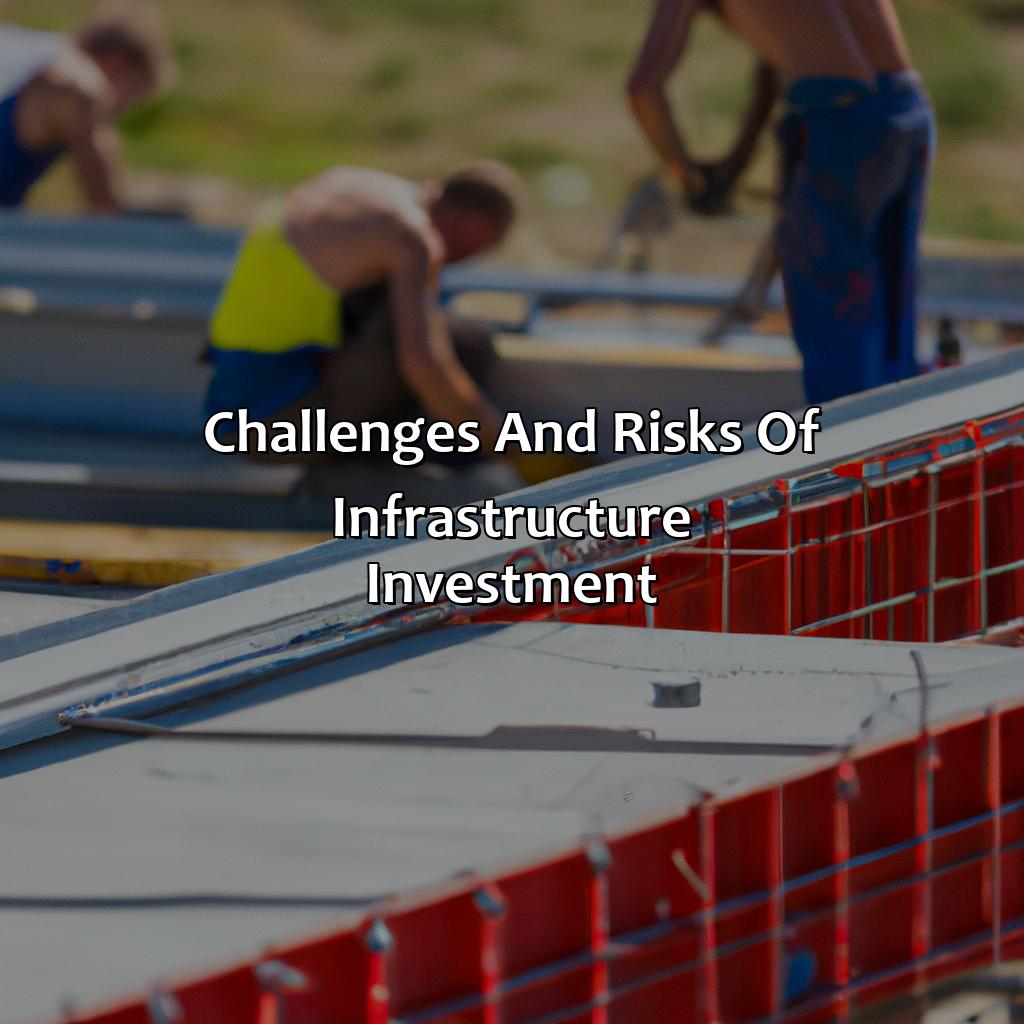
Image credits: retiregenz.com by Adam Woodhock
Funding issues
One of the primary challenges in infrastructure investment is securing adequate funding for development and maintenance. The lack of financial resources often leads to deferred maintenance, inadequate access to essential services, and an inability to meet new demands. This situation is further compounded by limited private sector investment.
Furthermore, public-private partnerships (PPPs) can provide a viable alternative source of finance, but they carry risks associated with increased operational costs and reduced control over service delivery. Additionally, financial institutions may be reluctant to lend to projects with extended payback periods or uncertain returns on investment.
Risk mitigation strategies include careful project selection and evaluation of potential returns on investment before making decisions about funding sources. Moreover, capitalizing on existing assets and exploring innovative financing schemes like green bonds can help bridge funding gaps.
Pro Tip: Investing in quality data management systems can also help reduce financing risk by providing better visibility into project performance and enabling early identification of emerging trends that may impact financial viability.
Investing in infrastructure is like playing a game of Jenga with politicians – one wrong move and everything comes crashing down.
Political Risk
Along with financial risk, political instability is a critical infrastructure investment risk that may hinder the anticipated return. A country or region’s governmental instability can lead to economic problems, which can impact funding sources and repayment structures. Moreover, political risks include corruption, expropriation, discrimination, and the inability to convert currency. These risks may increase infrastructure project disruptions or significantly decrease revenue streams.
It is essential to work with local authorities and adhere to international standards in these circumstances. Conducting ethical business practices and adopting a transparent decision-making approach are significant steps to mitigate political risk associated with infrastructure investments.
Another method of reducing political risk is through insurance protection. Political Risk Insurance (PRI) coverage protects investors from losses resulting from non-commercial government interventions such as civil war or regulatory changes.
Investing in infrastructures such as roads, bridges and telecommunications networks is essential for economic growth; However, it brings many challenges and risks including Political Risk which must be managed prudently for long-term success.
Infrastructure investment: where taking a risk on the environment and social impacts is just part of the construction crew’s job description.
Environmental and Social Concerns
Infrastructure investment can have substantial environmental and social impacts. Such impacts could range from deforestation, emissions, loss of biodiversity to displacement of people and disruption of local communities. Infrastructure development has the potential to create both positive and negative effects on the environment and society.
Along with economic benefits, many stakeholders are also interested in infrastructure investments that minimize damage to the environment and respect human rights. To reduce environmental risks associated with infrastructure projects, it is essential to conduct a comprehensive environmental impact assessment when undertaking any project. Social concerns arising due to infrastructure developments call for adequate consultation processes involving all affected communities.
Policies which seek to alleviate as many adverse social effects as possible must build around urbanization, gender equalities, sustainable livings, transparency involving consultation of parties affected by large-scale development. Consequently, identifying potential mitigations that could be offset early in planning increases investment viability.
The history of environmental concern traces back before industrialization; however, pioneering efforts made circa 1850 laid technical groundwork for contemporary pollution reduction control programs. Nonetheless, numerous challenges remain part of planning infrastructure investments since social variables such as welfare inequalities and governance often dovetail with an array of issues related to the environment elaborating significant challenges facing optimal sustainability investments for both public and private investors globally.
Without a solid infrastructure investment strategy, you’re just throwing spaghetti at the wall and hoping something sticks.
Infrastructure Investment Strategies
Need help understanding how to invest in infrastructure? Look no further! “Infrastructure Investment Strategies” is here to save the day. It contains subsections with different methods for financing projects, such as public-private partnerships, government funding, and bond issuance.
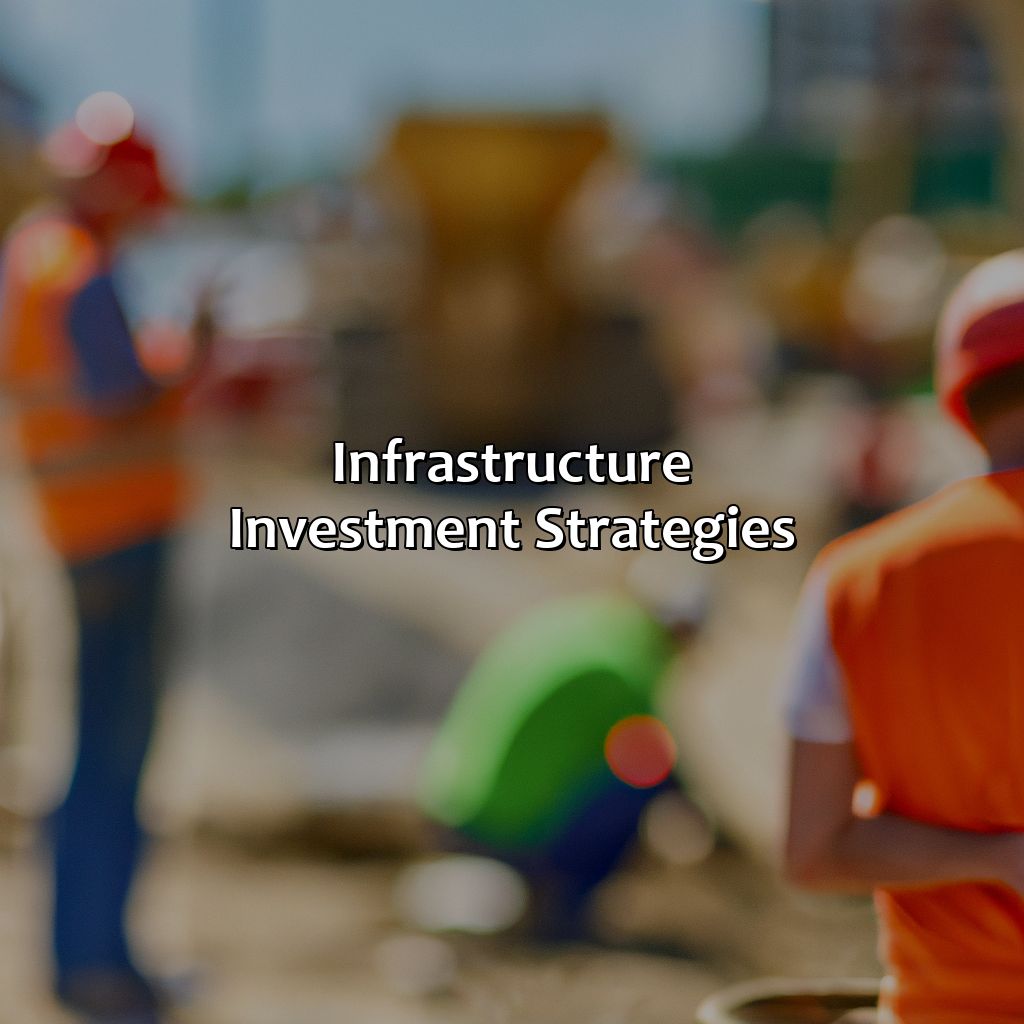
Image credits: retiregenz.com by James Washington
Public-Private Partnerships
Strategies where a public entity and private investor come together to fund infrastructure projects are known as Collaborative Investment Programs. This model is mainly used in the construction of highways, airports and other large services which can be funded through Public-Private Partnerships (PPPs).
Such a joint venture ensures that both parties share risks and benefits equally. PPPs have been used successfully worldwide to fund modernization projects in various fields, from healthcare to education and transportation. They benefit society by generating employment opportunities, improving infrastructure quality and expanding economic growth.
Collaborative Investment Programs are fruitful because they allow sharing of market skills within the financial industry among other investments that makes it scale up to another level. These programs prevent governments from using excessive resources for funding infrastructure while opening new investment opportunities for the private sector, enhancing competitive entry of funds at low transaction costs.
Around 4000 years ago, one of the earliest variations of PPPs was used on Egypt’s Nile River where farmers invested in basic infrastructure. In exchange for their contribution, entities like food processors were provided access to water sources which increase agricultural productivity & resulted in economic prosperity.
Looks like the government finally found a use for our tax dollars, besides those fancy coffee machines in their offices – infrastructure investment.
Government Funding
Government funding for infrastructure investments provides essential support for the development and improvement of public facilities, such as roads, bridges, and public transportation systems. These investments ensure that communities have access to safe and reliable services, which are critical for economic growth.
Investments in infrastructure also create jobs, stimulate economic development, and improve quality of life. Governments often fund infrastructure projects through a combination of grants, loans, and tax incentives. In some cases, private sector investors may also provide funding through public-private partnerships.
One notable example of government-funded infrastructure investment is the American Recovery and Reinvestment Act of 2009. This legislation provided over $105 billion in funding for transportation projects across the United States.
Pro Tip: Government funding can be a significant source of support for infrastructure investments. However, it is crucial to use these funds effectively by carefully planning projects and engaging with stakeholders to ensure success.
Who needs James Bond when you have bond issuances providing endless thrills for investors?
Bond Issuance
A financial instrument involving the issuance of bonds serves as a mechanism to raise capital funds. The bonds are typically issued by corporations, municipalities, or governments to finance infrastructure projects. Bond issuance is commonly used in infrastructure investment strategies due to its potential for generating long-term revenue streams while also providing lower risk through fixed income returns.
Bonds can be structured in varying ways and are typically classified based on their maturity period. Short-term bonds mature within one year, while long-term bonds have maturities ranging from several years to decades. Infrastructure investment funds utilize bond issuance as part of their strategy to finance public works projects such as highways, bridges, and airports.
As an alternative to traditional bank loans, bond issuances enable investors to lend money directly to the issuer of the bond. Bonds can provide investors with attractive rates of return and a level of predictability compared to other investments. This makes them an ideal option for institutional investors seeking stable returns over time.
According to a recent report from Refinitiv LPC, U.S. municipalities and states issued $305 billion worth of municipal bonds in 2020 alone. These figures illustrate how bond issuance has become a popular vehicle for financing infrastructure projects over recent years.
Some Facts About Infrastructure Investment:
- ✅ Infrastructure investment involves the allocation of financial resources towards the development and maintenance of public infrastructure such as roads, bridges, airports, and public transportation systems. (Source: Investopedia)
- ✅ Infrastructure investment can be financed through public-private partnerships (PPP), government funding, and foreign investment. (Source: World Bank)
- ✅ Infrastructure investment has the potential to spur economic growth and create jobs. (Source: Brookings Institution)
- ✅ Infrastructure investment is essential to ensuring the resilience and sustainability of infrastructure systems in the face of natural disasters and climate change. (Source: United Nations)
- ✅ Infrastructure investment is a long-term strategy and requires careful planning and management to achieve successful outcomes. (Source: PwC)
FAQs about What Is Infrastructure Investment?
What is infrastructure investment?
Infrastructure investment refers to long-term investment in the construction, maintenance and improvement of public physical assets such as roads, bridges, water supply systems, electrical grids and communication networks. This type of investment is essential to support economic growth and social development.
What are the benefits of infrastructure investment?
Infrastructure investment can have many benefits, including improved transportation, enhanced communication, increased access to clean water and electricity, and the creation of jobs and economic growth. It also helps to strengthen communities and improve quality of life for residents.
Who invests in infrastructure?
Infrastructure investment can come from a variety of sources, including governments, private investors, multilateral organizations, and public-private partnerships. These investors are motivated by different factors, such as financial returns, public service needs, and strategic priorities.
What types of infrastructure projects are typically funded?
Infrastructure projects can be diverse and include investments in transportation, water and sanitation, energy, healthcare, education and housing. They can range from building new infrastructure to upgrading existing systems.
What are the risks associated with infrastructure investment?
Infrastructure investment can carry some risks, particularly related to regulatory and political factors, as well as changes in technology and shifts in demand. However, sound planning, risk management and effective governance can help to mitigate these risks.
Why is infrastructure investment important for economic development?
Infrastructure investment is a critical component of economic development, as it enables access to markets, facilitates trade, lowers transaction costs, and enhances productivity. It can attract businesses, spur innovation and create jobs, while also improving the quality of life for citizens.
